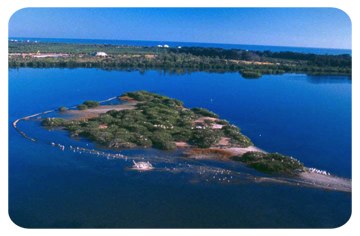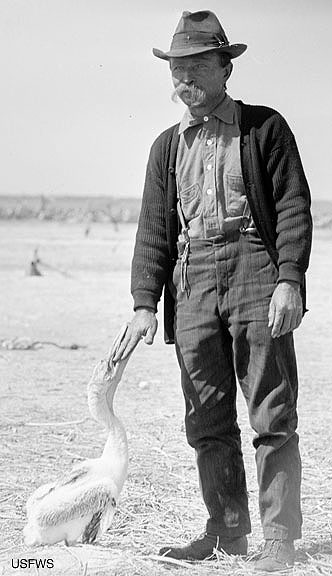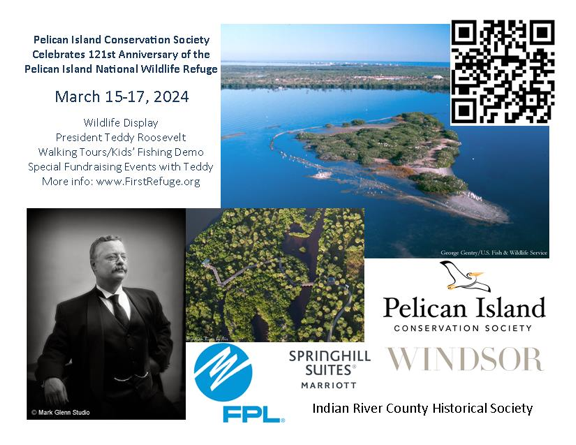|
PELICAN ISLAND
NATIONAL
WILDLIFE REFUGE
It is hereby ordered that Pelican Island in Indian River in section nine, township thirty-one south, range thirty-nine east, State of Florida, be, and it is hereby reserved and set apart for the use of the Department of Agriculture as a preserve and breeding ground for native birds.
—President Theodore Roosevelt, March 14, 1903

|
|
 |
Pelican Island Conservation Society
Celebrates 121st Anniversary of the
Pelican Island National Wildlife Refuge
March 15-17, 2024

Just a quick reminder that the Pelican Island National Wildlife Refuge 121st anniversary is coming up in a few weeks and we hope that you can join us for one, or several of the activities we have planned for the weekend of March 15-17th!
The wine and cheese sunset cruise is sold out, but there is plenty of space available for the picnic supper at the Environmental Learning Center on Friday, March 15th. This is an outdoor event at the Thomas Schidel pavilion on the ELC's campus. We will provide the music, a photo display, President Roosevelt's favorite dessert - Indian pudding - but the rest is up to you. And of course President Roosevelt will join us for some fun, and his presentation on how he established Pelican Island as our country's first National Wildlife Refuge.
And did we mention the special guests joining us this year? Wayne Kroegel, grandson of Paul Kroegel, and several of the Kroegel family members, as well as Ted Roosevelt IV, the great grandson of President Roosevelt, will be joining us for the picnic supper! We're all looking forward to meeting Mr. Roosevelt, and for Ted to meet his great grandfather, Teddy. I wonder if they will recognize each other?
On Sunday, March 17th, the folks from the Florida Wildlife Hospital in Melbourne will be joining us at the Refuge with a display of live reptiles. And we will be providing some ice cream treats for everyone that day. For all the details, as well as reservations for the picnic supper, please visit the PICS website at www.FirstRefuge.org/anniversary.
Bully for Pelican Island!
|
The History of Pelican Island
Pelican Island acquired its fame at the turn of the century from the wildlife photographers and naturalists who visited the area. Many of these people were disturbed by the slaughter of countless pelicans, herons, egrets, and other birds by plume hunters. A local resident, Paul Kroegel, who cared about the pelicans on the island became the staunch protector and enlisted the support of noted ornithologists, such as Frank Chapman, who helped establish the Audubon Societies.
At the urging of Mr. Kroegel, the Florida Audubon Society, and the American Ornithologists' Union, President Theodore Roosevelt signed an Executive Order on March 14, 1903 that permanently set aside the three-acre island as a wildlife sanctuary; and made Pelican Island the first National Wildlife Refuge. Since then, the National Wildlife Refuge system has grown to become the world's largest network of lands managed for wildlife with over 500 refuges totaling over 93 million acres.
"Pelican Island, located in Florida's (USA) Indian River, was the first unit of the USA's National Wildlife Refuge System. Reserving this area was not an instantaneous brainstorm of President Theodore Roosevelt, as astute as he was. Actions by persons to protect birds over a century ago ultimately contributed to T.R.'s bold commitment to an American wildlife and habitat conservation system."
Excerpted from "History of Pelican Island National Wildlife Refuge," Encyclopedia of Earth website. Click here to read the rest of this in-depth, extensive article on Pelican Island's history.
|
|
|
|